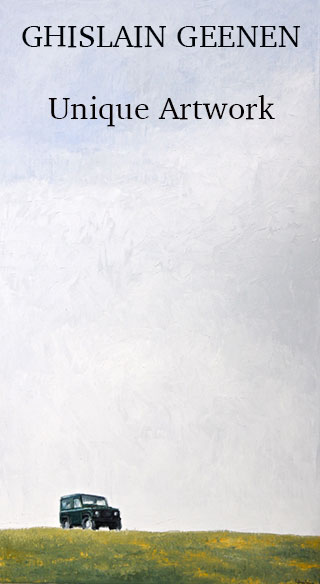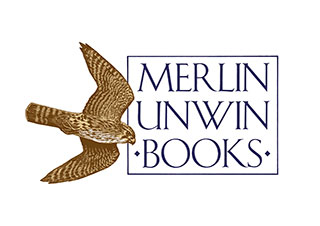Back in mid 2014, I answered a mild-mannered knock at the door one morning, expecting to see the usual Barbour-clad local with a shotgun in need of some attention.
Instead, I beheld a striking, long-haired chap in knee length lace-up boots: more Goth than Hugh Grant, or Rowley Birkin, which was a refreshing change.
Under his arm was tucked a small flat-pack bag, from which he produced some paintings of game birds, which looked strangely familiar. My visitor’s name was Christian Schwetz and he was to prove surprising in a number of ways; not least that this apparent extra from a documentary on The Damned rode to hounds and had made a speciality of equestrian photography.
His reason for darkening my particular door was his recent experimentation with game bird still-life artwork, which turned out not to be painting at all, but photography in the style of some old masters. I was immediately struck by their unique quality and impressed with the technical and artistic skills involved in producing them.

Christian wondered if I might have some suggestions as to where he may find clients for this kind of thing and what my reaction, as someone in the gun trade, might be. He also ventured that he was looking for objects to include in the artwork, beyond the birds themselves and had mulled over the inclusion of old guns and ephemera to add variety to the fruit and cutlery used so far.
I well know that shooting men like their guns, they like their books on guns and they like their sporting art. Unfortunately, painting a picture is a time consuming and costly business and the results are often unpredictable, as has been evidenced by some of the, frankly dodgy, portraits of their gun dogs that several friends have paid hard cash for over the years.
Photography, however, requires all the same set-up time but the shots themselves can be experimented with, deleted and fine tuned until light, shadow, composition and texture are all to the satisfaction of the artist. Time-wise, the photographic process for composing one piece requires a day, rather than weeks. This brings this kind of art within reach of a wider audience, with a unit cost of around £750. Not cheap, but within range of a generous gift to mark a special occasion.
he studied photography at St. Martin’s before working as photojournalist in Asia and Africa.
It occurred to me that many of my clients have favourite shotguns and may enjoy the opportunity to feature one in a unique piece of commemorative art. We selected a couple of guns and a few bits and pieces to add texture to the game bird sets and off went Christian to see what he could assemble.
The artist himself is an interesting character. Educated at Cambridge, after graduation he went to Czechoslovakia and witnessed the revolution, staying in Prague to work as a teacher for a while.
the word, ‘photography’ means painting with light.
Upon returning to London, he studied photography at St Martin’s before working as photojournalist in Asia and Africa. This led up to his move to Shropshire and a specialisation in equine photography. “I've long been exploring the connection between painting and photography. Even the word, ‘photography’ means painting with light. I've always paid special attention to lighting and my equine portraits are often mistaken for oil masters, so it seemed a natural extension to take these techniques further.”
Christian’s influences are drawn from past masters. A still life painting by Zurbaran, a 17th century Spanish painter, was an early inspiration: “Its of a slaughtered lamb, simply presented, bound and laid on a slate slab against a black background. I also looked at the Dutch masters of still life from the Golden Age. This was a time when people rapidly found new wealth, connected with trade and the Indies. This created a market for art and the depiction of luxury. The perfect conditions for an explosion of the still life form.”
Christian experimented with his still-life compositions and rural Shropshire provided the inspiration and objects in the form of locally shot game birds and wildfowl.”I wanted a variety of birds, in the feather to give colour and represent a dream bag. Enquiries at various butchers proved too slow for my impatience. By chance, though, we walked into a shooting party at our local pub and they were treating the gamekeeper to some post shoot drinks. I've found Shropshire to be such a warm and open county, and five minutes later I had the promise of all sorts of exotic birds".

The Spanish painter Cotan often painted still life pieces of birds hanging in a food store. This approach fitted perfectly with Christian’s aim of structuring his photographs and ordering the elements within the composition. The black background isolates the objects and the viewer is invited to scrutinise each form.
His first piece was a cock pheasant, locally shot and presented on local stone slabs, reclaimed from a demolished country pile a few miles away. The result was encouraging and a white pheasant followed, set with pomegranate, “as a good colour combination and to symbolise rebirth, following the story of Persephone.”
The same stone frame was retained for the next foray: woodcock. Further inspiration was taken from the artist Grinding Gibbons, who lived during the reign of Charles II, producing lime wood carvings for stately homes. “Woodcock are more subtle than the, by comparison, garish pheasant. I wanted their subtle yet beautiful plumage to be given space to speak for itself. Having tried augmenting with lemons, I went for just red grapes, which I could drape and sculpt and whose subtle colour wasn't going to detract.”
Wildfowl followed, with the lovely vibrancy of mallard and teal plumage providing the colour and their different sizes adding variety to the structure. Christian noted the importance of working with fresh birds, where possible, as the hues change and the feathers lose their sheen only a day or two after death.

The question as to how Christian manages to bring painting-like quality to a photographic process remains his secret. He hints at the importance of lighting and his experiences of equine photography were important educational steps leading his to the current project. I think Christian’s art offers some real differences to much of what is available to the shooter or countryman wanting some personally decorative piece. It bridges the gap between commissioned drawings or paintings and the usual shoot photography that is now being offered by the top men in that field, like Jonathan McGee.
In the months which followed, I provided Christian with various guns and accessories and birds to photograph. Some now hang on my walls, unique pieces I will always treasure. Meanwhile, he continued to impress with his exhibitions at game fairs and his stunning equine photographs never failed to gather admirers. He later opened a gallery in the nearby town of Presteigne.

Lately, Christian had been in Mexico, apparently living a good life for an extended holiday. His beach photos and short films on social media seemed to tell the world he was happy after extracting himself from a difficult relationship. As is so often the case, unfortunately the facade hid a troubled soul.
Christian returned home in June and, I'm sorry to have to report, took his own life shortly afterwards.
Few who met him will forget him. He was a character, an intellect and a talent. The world feels a little sadder with his passing. As is always the case when a man in his prime feels he has nothing for which to live, those who knew him wonder if they should have known, how they might have helped.
Published by Vintage Guns Ltd on



